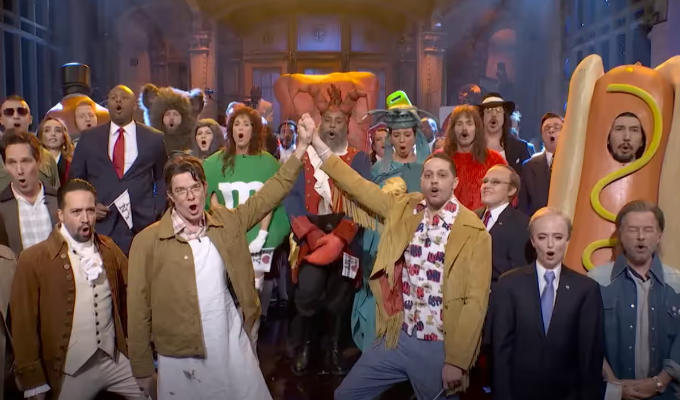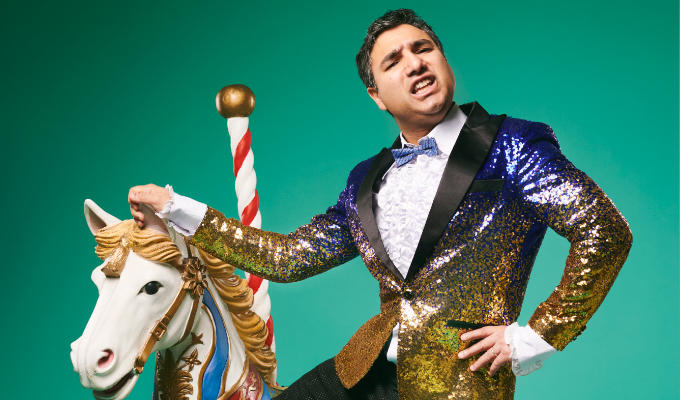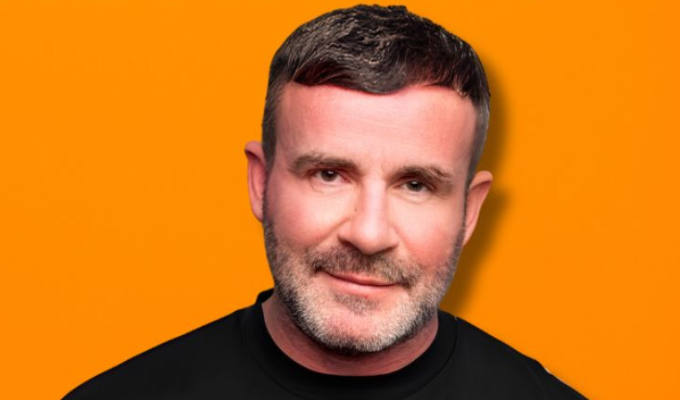
Why Britain has failed to remake American comedy formats before
Lorcan Mullan concludes his look at how SNL UK might - or might not - work
Before this fourth and final of my observations, I want to say that one area that won’t be a problem for SNL UK is booking good musical guests. There’s a dearth of places for musicians to perform on British TV, outside of humouring Jools Holland and his audience of middle-aged men in their Joy Division shirts. If only there was some sort of show that showcased what that week’s songs were at the top of the pop charts…
4. The spectre of expectation and the media landscape in the 2020s
It’s often asked why the UK has never successfully imported certain formats so popular in the States. The Daily Show-like satire, the five-shows-a-week late-night chat show, and even the celebrity roast have been attempted multiple times here, and every attempt so far has failed.
Some of the reasons are cultural differences, but I do feel, at least on the British side, it’s more the nature of how our TV industry operates.
Plenty of people have bemoaned the lack of anywhere in the UK for a channel or brand that works in the same way as Adult Swim, the adult-oriented offshoot from the children’s channel Cartoon Network. In recent years Adult Swim has provided the broadcaster’s first mega-hit in Rick & Morty, but it’s otherwise usually been an artistic safe space for alternative comedians like Tim Heidecker and Dave Willis.
It’s also where experimental shorts like Too Many Cooks can be produced. Even if it hadn’t gone viral, Adult Swim would have been satisfied that this sketch will have worked as it was originally intended, as a bit of surreal horror dropped unannounced, at a time when the channel usually aired infomercials, in order to freak out their core audience of stoners drifting in and out of consciousness on their sofas...
The reason we’re unable to produce this sort of show is really a matter of economics. The US population is approximately 350 million people, whereas the UK is a fifth of that. A US commissioner can greenlight a show that would appeal to one in 350 people, and they could still tell advertisers it has a potential audience of one million. For a UK commissioner to gain a target audience like that, which will allow their show to be viable, it would need to appeal to one in 70.
SNL is shown on the mainstream NBC network from 11:30pm to 1am. It averages viewing figures of around 5 million, or 1.5 per cent of the population.
Sky is available to about 10 million subscribers in the UK. If their SNL can match the US for audience share (which is a huge ask) that would be an audience range of around 150,000 to 200,000. Is that honestly the kind of viewing figure that can justify a budget for a large group of writers, actors, and a crew capable of producing 60-to-90 minutes of live and prerecorded content for up to 20 weeks, accommodating both comedy sketches and live music, with multiple new sets needing to be built every weekend?
The brand of SNL is valuable enough to guarantee a high level of coverage in the UK media but not necessarily the viewing figures to make it worth its hefty price.
It’s not as if the British media is known to have a high tolerance for allowing shows to improve over time or that have an inherent variation in quality week-to-week. If the first episode or two aren’t full successes (and I’m being generous thinking critics will allow them two episodes) the stink of failure may be on it before it can even find its footing and executives worried about their future will pull the plug quicker than you can say Host The Week.
Suggestion: SNL UK is going to live or die based on how Sky can use social media
SNL is as relevant now as it has ever been because its one-week production cycle and target audience of media-conscious people. They are often seen as the first responders, outside of the news media, to major events that shape the cultural conversation.
The moment SNL gained a foothold in the UK and regained its place in the American zeitgeist, was when Tina Fey parodied Sarah Palin so effectively during the 2008 presidential election. That was also the first election after YouTube and Facebook became go-to locations on the internet. The cold open in the era of Trump has often felt like the one part of the show that became required viewing, and it helped that YouTube provided an easily accessible hub for those clips in question.
There has been a reluctance from UK broadcasters to engage with the world’s most popular video platform.
It boggled my mind that The Mash Report wasn’t given its own YouTube channel when it began, and Nish Kumar’s monologues on a particular topic, or his back-and-forths with Rachel Parris, weren’t clipped into easily digestible and shareable shorter clips after the initial broadcast to make it available to the widest possible audience.
Instead, people had to go to the BBC’s iPlayer to watch the full episode, or you might have found a short clip go viral on a less relevant video space like Facebook that I assume the BBC just didn’t bother monitoring as much for their video content copyright.
UK broadcasters basing the availablity of their output by first thinking about their own in-house streaming services has always been a mistake. I can already see the Sky logic of hoping that that low viewing figures for SNL UK will be fine if it can be proven to help their subscription numbers for Now TV.
Much of John Oliver’s Last Week Tonight’s popularity comes from the fact that you don’t have to be an HBO customer in the States to watch it because the main feature for each episode is uploaded to YT the day after its first broadcast.
The channel has nearly 10 million subscribers (the US SNL one has 15 million) and literally dozens of their videos have eight-figure views. However, you need to be a Now TV subscriber in the UK to see the most recent clips as Sky clearly have an exclusivity deal with HBO that blocks uploads from being accessible here for a month.
If every sketch and musical performance of UK SNL isn’t uploaded to YouTube within 12 hours of their original broadcast or, even worse, Sky places a similar four-week delay on the show being available, then I’ll know it’s doomed. You need as many potential eyeballs on the show as possible, and you need to have the best work you produce be easily and separately digestible.
If the UK show starts producing sketches of a higher quality than their US counterparts (which I believe they can) then it will make the show, and its cast, become big names in the UK and probably the US and beyond.
It might even cause some conflicts with their US counterparts for showing them up, especially in those weeks when both shows are being produced on the same Saturday, and thanks to time zones the UK will have five hours on the Americans to get all the good jokes about the week’s major events in first.
I don’t doubt that the UK have the writers and performers capable of making this show work.
What I worry about are the people who decide who those writers and performers are, and don’t have the right eye for the right talent. Multiple people have thought Justin Lee Collins was who we wanted on our TVs.
I worry that these people will believe that all they need to do to make SNL UK a success is copy SNL US.
I worry that these people will think the success of SNL is because of the high-profile guest hosts.
I worry about the people who decide how we are going to be able to watch SNL UK.
Those are the people who are going to make or break SNL UK.
Let’s all hope, for the sake of the UK comedy scene, that they know what they’re doing.
A four-part guide to making sure the British SNL isn't a flop
Part 1: The sketches
Part 2: The hosts
Part 3: The cast
Part 4: The expectations (this article)
Published: 20 Apr 2025






